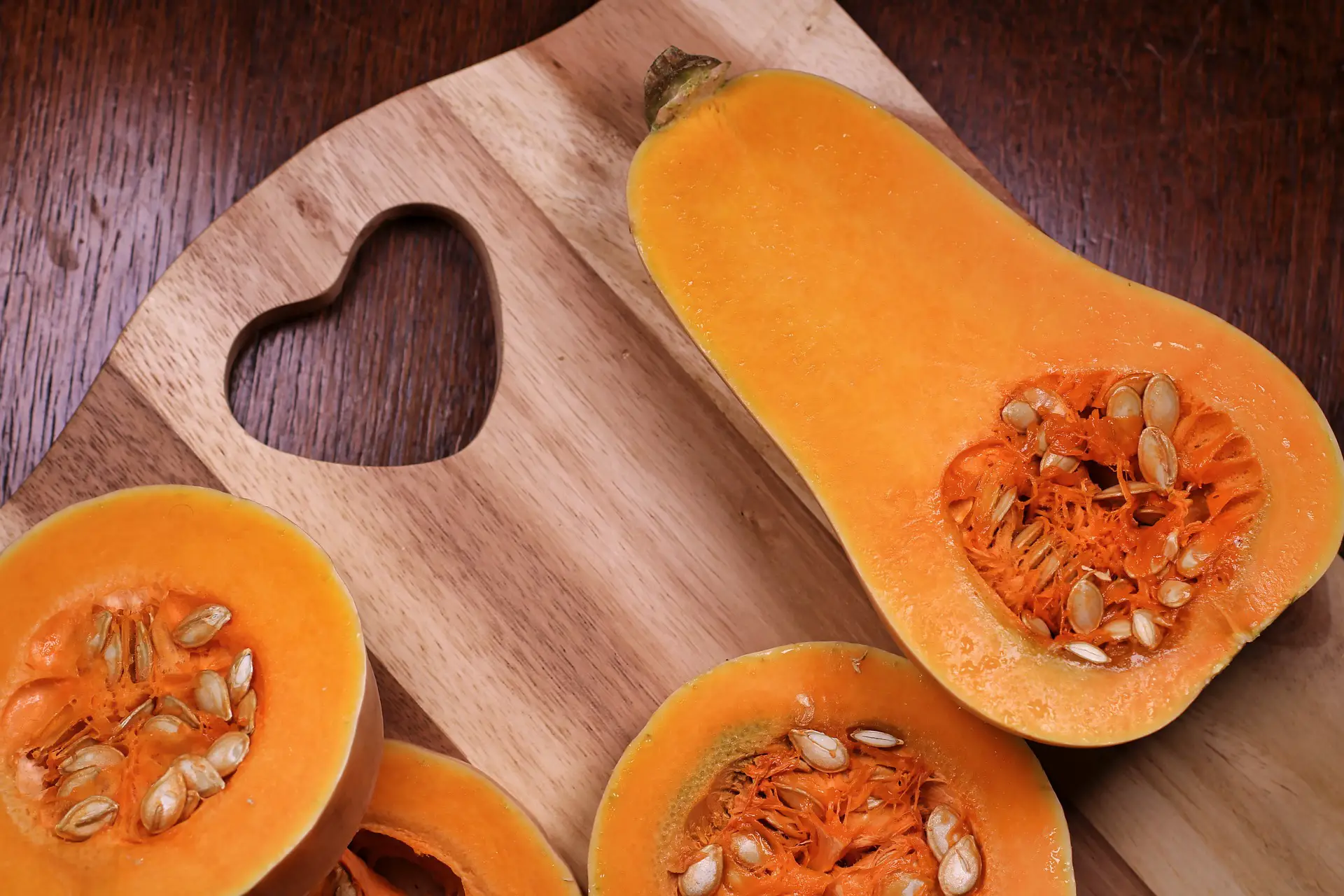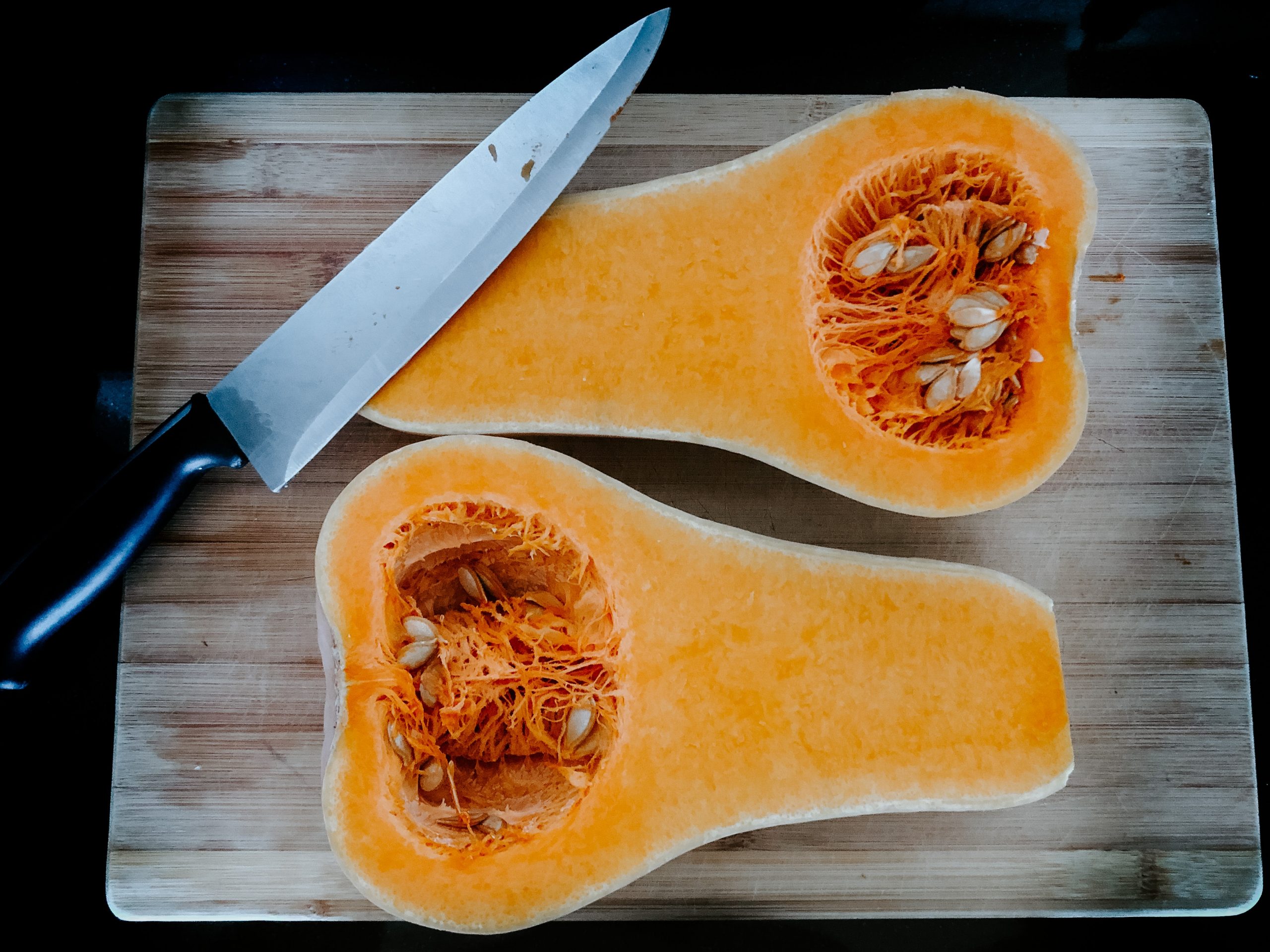If you are interested in canning butternut squash, you should know that you can freeze it. This is a great way to store it, so you will not have to worry about running out of this amazing fall fruit during the busy winter season. You can make puree or soup from it, too. We are here to help you out in freezing butternut squash properly with our simple tips and tricks.

Can you Freeze Butternut Squash?
If you are a fan of butternut squash you are probably wondering if it is possible to freeze it. You can, and it’s an easy process. It won’t take you a lot of time, and you can use it for up to 9 months in the freezer.
To freeze butternut squash, you first need to prepare it. It’s a good idea to dice and cut the squash into bite-sized pieces. Then, you can place it in a freezer bag.
For best results, you should freeze the butternut squash in an airtight container. You can also freeze it in a freezer-safe plastic bag or Ziploc. But if you’re looking for a more convenient option, you can simply put the raw squash on a cookie sheet lined with parchment paper and then freeze it.
When freezing, you can choose to leave the skin on or remove it. Whether you freeze the whole squash or cut it into small portions, you should leave an inch or two of space in the freezer bag. This will allow the squash to expand when thawing.
Another way to freeze butternut squash is to puree it and freeze it in ice cube trays. Purees can be stored for up to a year in the freezer.
How to Freeze Butternut Squash?
Like freezing berries, raw butternut squash chunks can be frozen: They should be separated from one another on a baking sheet and frozen until very solid. After that, place them in a freezer container with some room for expansion. frozen until required.
Simply use the techniques we’ve provided below to freeze raw butternut squash effectively. It must be blanched such that it is not raw but also not fully cooked:
- The first step in preparing your squash is to peel the butternut squash. It’s unpleasant to eat and will remain tough even after a lengthy roast. After carefully removing the hard outer shell with a sharp knife, slice the raw butternut squash into equal-sized pieces.
- Blanch it: Next, parboil the butternut squash chunks for about 5 minutes in salted boiling water, or until the edges are fork-soft. Put your butternut squash into a pot of ice-cold water to stop the cooking process and lower the temperature.
- Drain: After removing the food from the ice-cold water, blot it dry completely using paper towels.
- Flash Freeze: Place your butternut squash on a baking sheet, making sure that no pieces contact. Overnight in the freezer, wrap the tray in foil or cling film.
- Final Freeze: After the chunks have frozen, take the tray from the freezer, place them in a freezer bag or other airtight container, and return the container to the freezer.
Before putting your container in the freezer, make sure to name and date it.
It’s also important to note that all squash varieties and sizes can be cooked using this technique. The squash can be sliced into slices, big chunks, or little cubes.
Can you Make Puree or Soup with Frozen Butternut Squash?
Butternut squash soup is a tasty vegetable dish that’s perfect for the fall season. With only a few simple ingredients, it’s a satisfying meal that’s easy to make. It’s also an excellent option for leftovers.
This recipe uses butternut squash, but you can easily substitute other vegetables such as carrots, celery, or even fresh tomatoes. You can even use acorn, buttercup, or kabocha squash.
Butternut squash is a very low-carb vegetable with lots of protein and fiber. You can also enjoy it as a side dish or even in your favorite quick bread or cake batter. But if you’re looking to serve it in a soup, you’ll need to make sure you follow the proper steps to create a smooth, creamy soup.
Before you begin, it’s important to remove the tough skin on the inside of the butternut squash. Cut it into thin slices with a sharp chef’s knife. Then, scoop the flesh into a blender or food processor. Be sure to stir every few minutes to prevent the puree from sticking to the sides.
After you’ve pureed the squash, add it to your soup. You can either add more water to thin the soup, or you can add the stock. If you’re making a vegetarian version, use vegetable stock instead of chicken.
Can you Store Frozen Butternut Squash in Canning Jars?
Butternut squash is a versatile vegetable. It can be cooked, preserved, and frozen. This squash is also a good source of vitamins and minerals. The taste is sweet and nutty. Besides being nutritious, it is a low-calorie food.
Butternut squash can be frozen for longer periods. If you have a pressure canner, it can be canned. A half-pint jar holds 350 grams of butternut squash.
To freeze, slice the squash into uniform, one-inch cubes. Place the slices on a cookie sheet in a single layer. Cover with plastic wrap. Leave about a half-inch of headspace. Refrigerate the jars for 24 hours.
Before freezing, it is important to ensure that the jars have been sterilized. Wash the jars and rims. Once the jars are filled, you can process them in a pressure canner for 90 minutes for quarts and 55 minutes for pints.
When preparing the jars, remember to leave about 1 inch of headspace. Also, don’t forget to close and seal the jars. Having the proper lids and rings is important.
If you aren’t using a pressure canner, you can freeze butternut squash in a freezer bag. You can also dehydrate the squash. But be sure to keep the jars in a cool, dark place.
Most hard, root vegetables, including swede, carrots, and parsnips, can be prepared using this technique.
How to Freeze Roasted Butternut Squash?
Butternut squash is frequently prepared by roasting it with other veggies and herbs. While there are many vegetable combinations you can attempt, we advise you to start with carrot, squash, leeks, onion, and celeriac.
Here is how we cook butternut squash and freeze it:
- Prepare your vegetables by coarsely cutting them all into the same size pieces.
- Vegetables are roasted by placing them in a roasting pan, dousing them with olive oil, and then flavoring them with herbs. Roast for 30 to 40 minutes at 200C in the oven, or until everything is cooked through and starting to brown.
- Allow everything to cool.
- Put the servings in freezer bags that can be sealed after they have cooled. Each bag should include a part of the food. This eliminates the need for flash freezing and enables you to take a portion as needed.
- Last but not least, put it in the freezer. After 30 minutes, you can shake the bag to keep it from clumping altogether.
What does Blanching do?
Squash that has been blanched before freezing prevents the development of enzymes that alter the flavor of frozen squash. It’s not for safety; rather, it’s to keep the squash’s flavor, texture, color, and nutrients.
Whether you blanch it or not, its shelf life is the same. The taste and texture of the squash should be ok if consumed within 4 to 6 months.
Still, blanch those butternuts for the finest results! Look at this recipe for blanched kale for a fantastic illustration.
How to Prepare your Squash?
Okay, let’s discuss freezer preparation. What steps must you take to prepare your butternut squash for freezing? A freezer-safe storage container is required. You can use any freezer-safe plastic container or resealable freezer bag. Your storage container needs to be both airtight and sizable enough to accommodate all the squash comfortably without exploding.
The squash doesn’t even need to be blanched, even though some people advise it. In my experience, freezing squash that has been blanched or not makes no difference. I usually think it tastes the same and always comes out fresh, but you might have a different opinion. To determine whether the way tastes better, it could be worthwhile to test both.
The butternut squash can be blanched by boiling it for a brief period at a high temperature in a pot of water, then immediately dropping it into an ice bath. Then, immediately place it in your freezer. Make sure to first wipe off any extra water.
This prevents enzymes from gradually degrading over time. It is intended to prevent the squash from spoiling so rapidly and prolong its freshness. This is crucial for berries and many other types of fruits and vegetables since it makes them last longer in storage and tastes better when you’re ready to utilize them. The butternut squash may benefit from it as well, but I don’t think it’s required.
The squash can be kept either raw or cooked. Both ways are effective, and you can use essentially the same technique in any case.
How should raw butternut squash be frozen? Immediately put it in a freezer-safe container. Make sure to let out as much air as you can if you’re using a plastic bag. You can slice, dice, or even eat the squash whole. I’ve found that cutting it into more manageable portions that I can then break off as needed works best for long-term storage. To avoid having to break off any frozen squash to utilize it, you could also wish to freeze smaller chunks in separate bags.
What about cooking butternut squash and freezing it? Use the same procedure as described above to freeze squash, but allow it to cool to room temperature first before storing it. Once more, before storing the squash, you might want to cut it into manageable, little pieces. It could be difficult to remove only what you need from the squash once it has frozen firm.
How can butternut squash soup be frozen? Use the same procedure as described above for cooking the squash, then let it cool and store it in a freezer-safe container.
How do you Defrost Butternut Squash?
The good news is that frozen squash may be cooked for several minutes straight from frozen, whether it is chunked or sliced.
Butternut squash can be steamed or cooked in boiling water for a few minutes, just like many other frozen vegetables. However, this might lead to butternut squash that is floppy and limp.
For the best side dish, roast it for about 30 minutes after tossing it with oil and spices. To prepare frozen butternut squash for soups and stews, it can be boiled straight in stock.
Does Butternut Squash Freeze Well?
Depending on how it will be prepared, fresh or frozen food may be preferred. Fresh squash works best in dishes where texture counts because frozen squash has a distinct consistency from fresh squash. However, frozen works just as well for purees, soups, and stews.
Conclusion
Now that you are aware of how to freeze butternut squash, you can prepare a variety of meals whenever you like. The squash will last for three to six months if frozen right away. simply thaw and begin cooking.
